
|
You entered: apollo
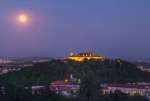 Full Moon over Brno
Full Moon over Brno
16.09.2016
After sunset this gorgeous full moon rose over Brno city in the Czech Republic on July 20, 2016. The panoramic image was made during a celebration of the 47th anniversary of the Apollo 11 lunar landing.
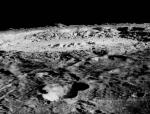 Lunar Orbiter Views Crater Copernicus
Lunar Orbiter Views Crater Copernicus
16.06.2007
To prepare for the Apollo landings, five Lunar Orbiter spacecraft were launched during 1966 and 1967 to gather detailed images of our fair planet's large, natural satellite. Dramatic views returned by the spacecraft cameras included this stark moonscape.
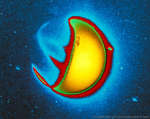 Ultraviolet Earth from an Observatory on the Moon
Ultraviolet Earth from an Observatory on the Moon
28.10.2018
Which planet is this? Earth. The featured false color picture shows how the Earth shines in ultraviolet (UV) light. The image is historic because it was taken from the surface of the Moon by humanity's only lunar observatory.
 Odysseus on the Moon
Odysseus on the Moon
2.03.2024
Methalox rocket engine firing, Odysseus' landing legs absorb first contact with the lunar surface in this wide-angle snapshot from a camera on board the robotic Intuitive Machines Nova-C moon lander. Following the landing on February 22, broken landing legs, visible in the image, ultimately left the lander at rest but tilted.
 Lunar Orbiter Earthset
Lunar Orbiter Earthset
27.08.2016
August 10th was the 50th anniversary of the launch of Lunar Orbiter 1. It was the first of five Lunar Orbiters intended to photograph the Moon's surface to aid in the selection of future landing sites.
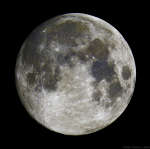 On a Blue Moon
On a Blue Moon
1.09.2012
Rising at sunset, the gorgeous Full Moon of August 31 became the second Full Moon in a month. According to modern reckoning, that makes it a Blue Moon. In fact, parts of the Full Moon do look a little blue in this sharp lunar portrait.
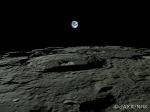 Earthrise from Moon Orbiting Kaguya
Earthrise from Moon Orbiting Kaguya
20.11.2007
What does the Earth look like from the Moon? A new version of this space age perspective was captured by the robotic Kaguya spacecraft currently in orbit around Earth's Moon. Launched two months...
 Restored: First Image of the Earth from the Moon
Restored: First Image of the Earth from the Moon
18.11.2008
Pictured above is the first image ever taken of the Earth from the Moon. The image was taken in 1966 by Lunar Orbiter 1 and heralded by then-journalists as the Image of the Century. It was taken about two years before the Apollo 8 crew snapped its more famous color cousin.
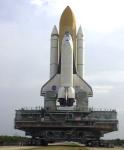 The Shuttle Crawler Transporter
The Shuttle Crawler Transporter
4.03.2002
NASA's Crawler-Transporters are the largest tracked vehicles in existence. Although the crawlers pack over 5,000 horsepower, their top speed is less than two kilometers per hour when fully loaded. Eleven people are needed to drive a single crawler. Diesel fuel mileage is about 350 liters per kilometer (less than 0.007 miles per gallon).
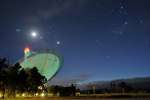 Dawn of the Dish
Dawn of the Dish
19.07.2012
Wandering planets Venus and Jupiter were joined by an old crescent Moon near the eastern horizon on July 15. This serene southern skyview of the much anticipated predawn conjunction includes the lovely Pleiades star cluster and bright stars Aldebaran and Betelgeuse in the celestial lineup.
|
January February March April May June July |
|||||||||||||||||||||||||||||||||||||||||||||||||